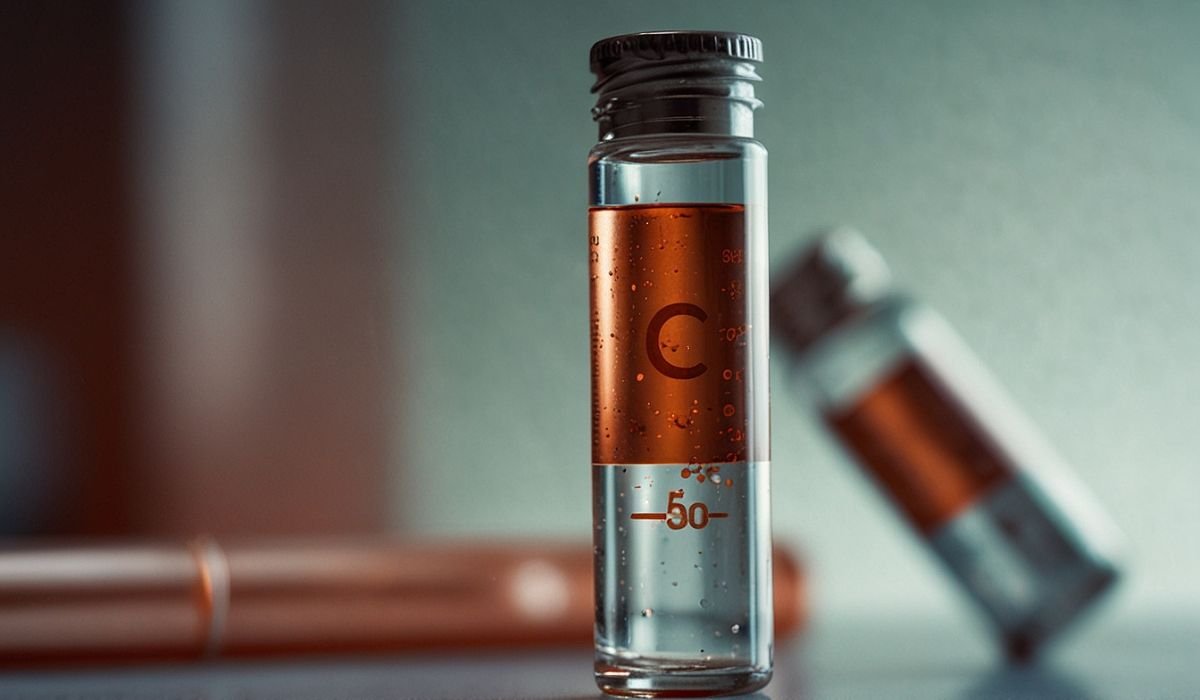What if a simple blood test could reveal hidden clues behind your unexplained fatigue, mysterious nerve issues, or even a family health puzzle? That’s the power hidden within a serumcu test – your key to unlocking the secrets of copper balance in your body. Imagine feeling constantly drained, not knowing if it’s stress, diet, or something deeper. A serumcu test could be the vital piece your doctor needs to solve the mystery.
Copper isn’t just for pennies or pipes; it’s a crucial mineral orchestrating hundreds of essential bodily functions, from energy production to brain health. But like Goldilocks’ porridge, the amount needs to be just right. Too little, and your body sputters. Too much, and it can become toxic. The serumcu test acts like a precise mineral detective, measuring the copper circulating in your blood serum, giving doctors a snapshot of your copper status. Let’s dive into why this often-overlooked test matters so much for your health.
Why Copper Balance Isn’t Just for Chemists
Copper is a behind-the-scenes superstar. Think of it as the ultimate multitasker:
- Energy Powerhouse: Essential for creating ATP (your body’s energy currency) inside your cells’ mitochondria.
- Iron’s Best Friend: Helps absorb iron from your gut and release it where needed (think red blood cell production!).
- Antioxidant Army General: A core part of superoxide dismutase (SOD), a major enzyme that neutralizes harmful free radicals.
- Connective Tissue Builder: Vital for forming collagen and elastin – the stuff that holds your skin, bones, and blood vessels together.
- Brain & Nervous System Support: Plays key roles in neurotransmitter synthesis and nerve cell function.
When copper levels drift too far from the sweet spot, things can go awry. This is where the serumcu test becomes indispensable.
When Does Your Doctor Order a Serum Copper Test?
This test isn’t part of your standard check-up. Doctors typically order a serumcu when specific clues point towards a copper imbalance. Here are common scenarios:
- Suspected Wilson’s Disease: This is the big one. Wilson’s is a rare but serious genetic disorder (affecting roughly 1 in 30,000) where the body can’t properly excrete copper, causing dangerous buildup, especially in the liver and brain. Symptoms can be vague at first – fatigue, abdominal pain, tremors, personality changes, or a distinctive rusty-brown ring around the cornea (Kayser-Fleischer rings).
- Unexplained Neurological Issues: Tremors, difficulty walking, slurred speech, or psychiatric symptoms without clear cause might trigger copper testing.
- Liver Problems: Unexplained hepatitis (liver inflammation), cirrhosis, or abnormal liver function tests can sometimes trace back to copper overload (like Wilson’s) or, less commonly, deficiency.
- Persistent Anemia Unresponsive to Iron: Since copper is vital for iron metabolism, a deficiency can cause anemia that doesn’t improve with iron supplements alone.
- Signs of Possible Copper Deficiency:
- Chronic fatigue and weakness
- Frequent infections (copper supports immunity)
- Pale skin, easy bruising
- Bone fractures or osteoporosis
- Tingling/numbness in hands/feet (neuropathy)
- Vision problems (rarely)
- Monitoring Treatment: For patients diagnosed with Wilson’s disease or severe copper deficiency, regular serumcu tests track how well treatment (like chelation therapy or supplements) is working.
Common Symptoms Triggering a Serum Copper Test:
| Symptom Category | Possible Link to Copper Imbalance |
| Fatigue & Weakness | Deficiency OR Overload (Wilson’s) |
| Neurological Issues | Tremors, Coordination Problems (Wilson’s) |
| Liver Problems | Unexplained Hepatitis, Cirrhosis (Wilson’s) |
| Anemia (Iron-resistant) | Copper Deficiency |
| Bone Issues | Osteoporosis, Fractures (Deficiency) |
| Skin/Hair Changes | Pale Skin, Loss of Pigment (Deficiency) |
Decoding Your Serum Copper Results: What the Numbers Mean
Getting your serumcu result can feel confusing. Here’s a simplified guide (remember, always discuss results with your doctor, as ranges can vary slightly by lab):
- Normal Range: Typically 70 – 140 micrograms per deciliter (mcg/dL) or 11 – 22 micromoles per liter (µmol/L). This suggests your circulating copper levels are within the expected window at the time of the test.
- High Serum Copper (Hypercupremia):
- Prime Suspect: Wilson’s Disease. Crucially, Wilson’s patients often have low ceruloplasmin (a copper-carrying protein) alongside high serum copper. This mismatch is a classic red flag. Your doctor will likely order ceruloplasmin and a 24-hour urine copper test together.
- Other Culprits: Severe infections, certain cancers, acute inflammation, rheumatoid arthritis, some liver diseases, or even high-dose estrogen (like birth control pills or HRT) can temporarily elevate levels. Chronic excessive copper supplement intake is also possible but less common as a sole cause.
- Low Serum Copper (Hypocupremia):
- Malnutrition/Starvation: Especially in conditions like anorexia nervosa or severe malabsorption syndromes (e.g., celiac disease, Crohn’s disease).
- Gastric Bypass Surgery: Can significantly impair mineral absorption, including copper.
- Excessive Zinc Supplementation: Zinc and copper compete for absorption in the gut. High zinc doses (well above the RDA, often from supplements) can block copper uptake. (This is a surprisingly common cause!).
- Menkes Disease: A rare, severe genetic disorder affecting copper absorption and transport, usually presenting in infancy with failure to thrive, seizures, and kinky hair.
- Nephrotic Syndrome: A kidney condition causing significant protein loss, including ceruloplasmin (which carries copper).
Read also: Fitness & Healthcare App Development: Challenges, Innovations, and Success Stories
Important Caveats: Serum copper levels fluctuate. They can be influenced by inflammation, hormones (especially estrogen), pregnancy, and even time of day. That’s why doctors never diagnose based solely on serumcu. It’s always part of a puzzle, considered alongside:
- Ceruloplasmin Level: The main copper transport protein.
- 24-Hour Urine Copper: Measures copper excretion, crucial for diagnosing Wilson’s.
- Liver Function Tests (LFTs): To assess liver health.
- Complete Blood Count (CBC): Checks for anemia.
- Symptoms and Medical History.
Copper in Your Kitchen: Diet’s Role in Balance
While genetic conditions like Wilson’s require medical management, diet plays a significant role in maintaining copper balance and preventing deficiency in the general population. Here’s the good news: copper is found in a wide variety of delicious foods!
- Top Copper Sources: Organ meats (liver – very high!), shellfish (oysters, crab, lobster), nuts (cashews, almonds, hazelnuts), seeds (sesame, sunflower, pumpkin), legumes (lentils, chickpeas), dark chocolate, whole grains, potatoes (with skin), and some leafy greens.
- The Zinc Connection: Remember the competition! While zinc is essential, routinely taking high-dose zinc supplements (over 40 mg/day long-term) without medical supervision can cause copper deficiency. Stick to the Recommended Dietary Allowance (RDA) unless advised otherwise by your doctor. The RDA for adults is about 900 mcg (0.9 mg) of copper per day.
- Deficiency Prevention: Eating a varied, balanced diet rich in whole foods generally provides sufficient copper for healthy individuals. Focus on nuts, seeds, legumes, and whole grains.
Real-World Impact: Sarah’s Story (A Case Study)
Sarah, a 32-year-old teacher, had been feeling increasingly exhausted for over a year. Blood tests showed mild anemia, but iron supplements didn’t help. She also developed occasional hand tremors, dismissed as stress. Her primary care doctor, considering her persistent fatigue and neurological symptom, ordered a serumcu test alongside ceruloplasmin.
The results were revealing:
- Serum Copper: 180 mcg/dL (High)
- Ceruloplasmin: 12 mg/dL (Low – normal is usually 20-40 mg/dL)
This pattern strongly suggested Wilson’s disease. A 24-hour urine copper test confirmed very high excretion. Genetic testing identified the causative mutations. Thankfully, early diagnosis allowed Sarah to start chelation therapy (drugs to remove excess copper) and a low-copper diet. While managing Wilson’s is lifelong, early intervention prevented severe liver or neurological damage, dramatically improving her long-term outlook. Sarah’s case underscores the serumcu test’s vital role in diagnosing elusive conditions.
Your Copper Action Plan: Key Takeaways
Understanding your serumcu test empowers you to take charge of your health. Here’s what you can do:
- Don’t Self-Order or Self-Diagnose: This test is complex. Interpretation requires a doctor’s expertise considering your full clinical picture.
- Ask “Why?”: If your doctor orders a serumcu, understand the reason. What symptoms or concerns prompted it?
- Context is King: Remember your result is one piece of a larger puzzle. Ask how it fits with other tests (like ceruloplasmin) and your symptoms.
- Diet First (For Maintenance): Focus on a balanced diet rich in whole foods to naturally support healthy copper levels. Enjoy those nuts, seeds, and legumes!
- Be Zinc-Savvy: Avoid long-term, high-dose zinc supplements unless specifically prescribed and monitored by your doctor due to the risk of copper deficiency.
- Follow Up Diligently: If diagnosed with a copper disorder (like Wilson’s or deficiency), adhere strictly to your treatment plan and monitoring schedule, including repeat serumcu tests.
Have you ever had unexplained symptoms that led to an unexpected blood test discovery? Share your experience in the comments below!
FAQs
- What is a normal serum copper level?
- The typical normal range is 70 to 140 micrograms per deciliter (mcg/dL) or 11 to 22 micromoles per liter (µmol/L). Always refer to your specific lab report, as ranges can vary slightly.
- Do I need to fast before a serum copper test?
- Usually, no. Fasting is generally not required for a standard serumcu test. However, always follow the specific instructions given by your doctor or the lab performing the test.
- What’s the difference between serum copper and ceruloplasmin?
- Serum Copper measures the total amount of copper circulating freely in your blood serum. Ceruloplasmin is the specific protein that carries about 90% of that copper. They are almost always tested together, especially when Wilson’s disease is suspected (low ceruloplasmin + high serum copper is a classic sign).
- What are the signs of copper deficiency?
- Common signs include fatigue, weakness, frequent infections, anemia (especially unresponsive to iron), pale skin, easy bruising, bone fractures/osteoporosis, and neurological issues like numbness or tingling in hands/feet.
- Is Wilson’s disease curable?
- Wilson’s disease is not curable, but it is highly treatable and manageable with lifelong medication (copper chelators or zinc) and a low-copper diet. Early diagnosis and strict treatment adherence allow most patients to live full, healthy lives.
- Can I get too much copper from my diet?
- It’s very unlikely for healthy individuals to get toxic levels of copper solely from food. The body naturally regulates absorption from dietary sources. Toxicity is primarily a risk from genetic disorders (Wilson’s), contaminated water, or excessive supplementation.
- Is the serum copper test covered by insurance?
- Generally, yes, when medically necessary and ordered by a physician based on symptoms or risk factors (like family history of Wilson’s). Coverage specifics depend on your individual insurance plan. Check with your provider if cost is a concern.
You may also like: Beyond the Hype: Understanding Geneza Pharmaceuticals & the World of Performance Supplements











